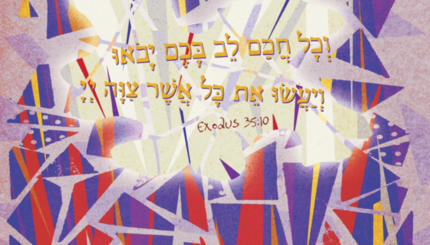Reprinted with permission from American Jewish Fiction: A JPS Guide (Jewish Publication Society).
At first glance, there seems to be no link between the two primary themes of Judy Blume’s classic novel for young adults, Are You There, God? It’s Me, Margaret: after all, what does having your first menstrual period have to do with picking a religion?
Margaret Ann Simon, the book’s protagonist, hopes to do both before the end of sixth grade, and when she runs into trouble on both fronts, she worries she is not normal.

books are lame
Hardly a cosmopolitan herself-though a habitue of Lincoln Center’s concerts, she has never sat on a plane-Margaret is nonetheless tapped into the currents of her time, an era during which American Jews entrenched themselves in the suburbs, led the sexual revolution, and confronted a host of changes within traditional Jewish communities, including growth in the rate of intermarriage.
With your help, My Jewish Learning can provide endless opportunities for learning, connection and discovery.
Whether she realizes it or not, Margaret is touched by each of these developments. Her family has just moved from the Upper West Side of Manhattan to suburban Farbrook, New Jersey. Margaret’s dad grew up Jewish, her mom Christian–though both profess no religion now–and her doting Jewish grandmother always wants to know whether Margaret has any boyfriends, and whether or not they’re of the tribe.
More dramatically, Margaret’s experience of puberty is marked by new possibilities of sexual frankness: not quite 12, she has seen more than her share of Playboy centerfolds, and her sixth grade class is subjected to an awful sex ed film, What Every Girl Should Know. None of this teaches her much, and her new gang of suburban friends only adds to the muddle.
As a result, Margaret–like J. D. Salinger’s Holden Caulfield and even Huck Finn himself–projects a charming blend of world-weariness and wideeyed innocence as she struggles to figure out who she is. Although she has been informed that she is not religious, she regularly confides in something she calls God–not grasping the irony as she begs, “I’m the only one without a religion. Why can’t you help me?” In other words, Margaret’s a preteen version of Bellow’s Herzog, a believer despite herself.
Margaret‘s Reception
She has also been a remarkable prizewinner: in 2005, for example, Time magazine called Margaret one of the 100 best novels published worldwide in English since 1923. Blume, who unlike her character grew up with two Jewish parents, is said to have sold more than 75 million copies of her books, and she has won a dizzying array of awards, capped perhaps by a special National Book Award for lifetime achievement in 2004.
Further reading
Blume has spun out a library full of beloved treasures for young adults, like Blubber (1974) and Superfudge (1980), as well as a few novels for more mature readers. Some biographies of the author, aimed at young readers, have been published, and the author maintains a website; for brief comments on how religion informed her writing of Margaret, see The Half-Jewish Book (2000), pages 31-33.
There are of course hundreds of other worthwhile books of Jewish interest for teens and younger children–Sadie Rose Weilerstein’s K’ton Ton books are also classics. Other novels that feature the children of intermarriage include Samuel Yellen’s The Wedding Band (1962) and Anne Bernays’s Growing Up Rich (1975).


